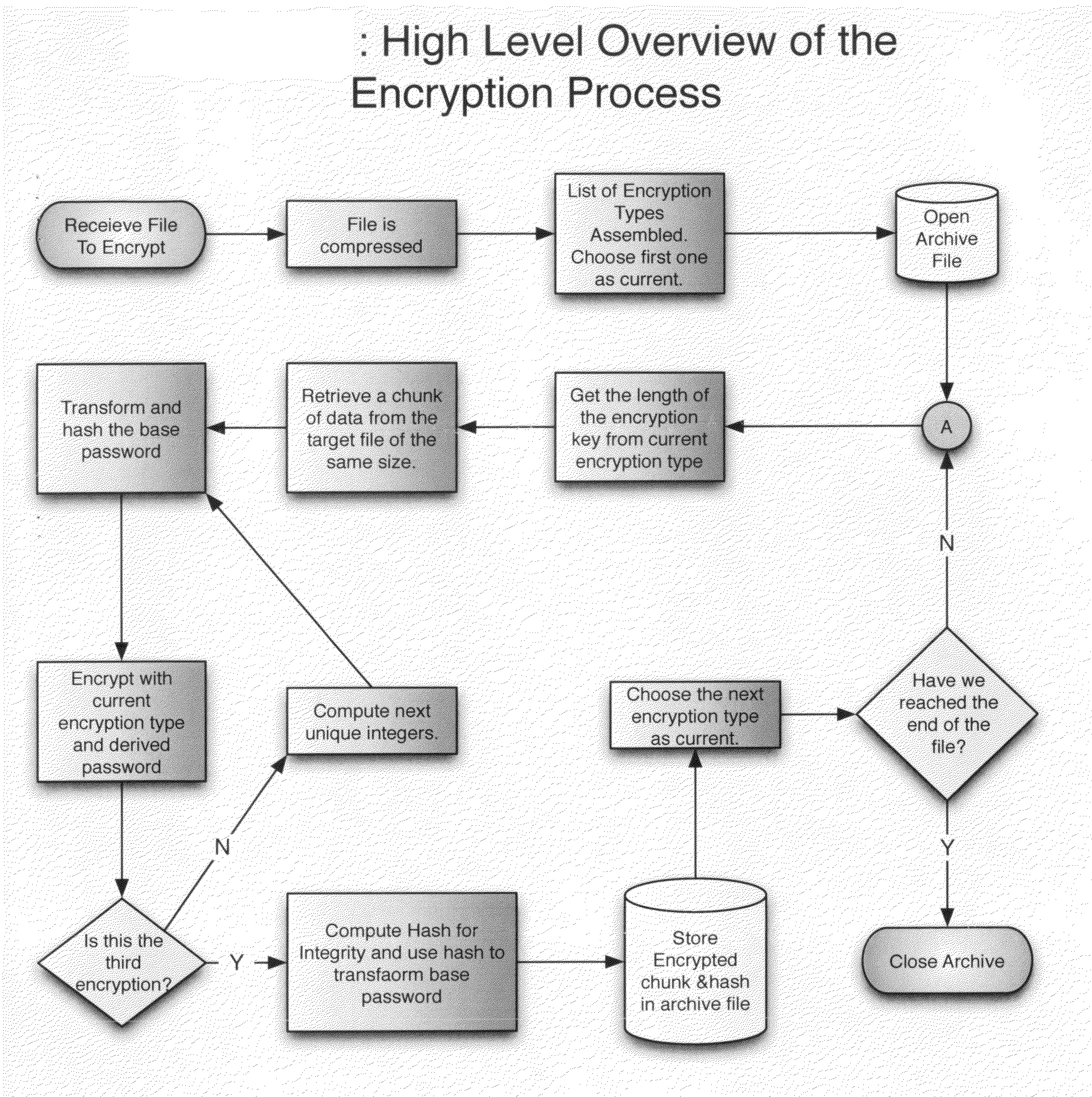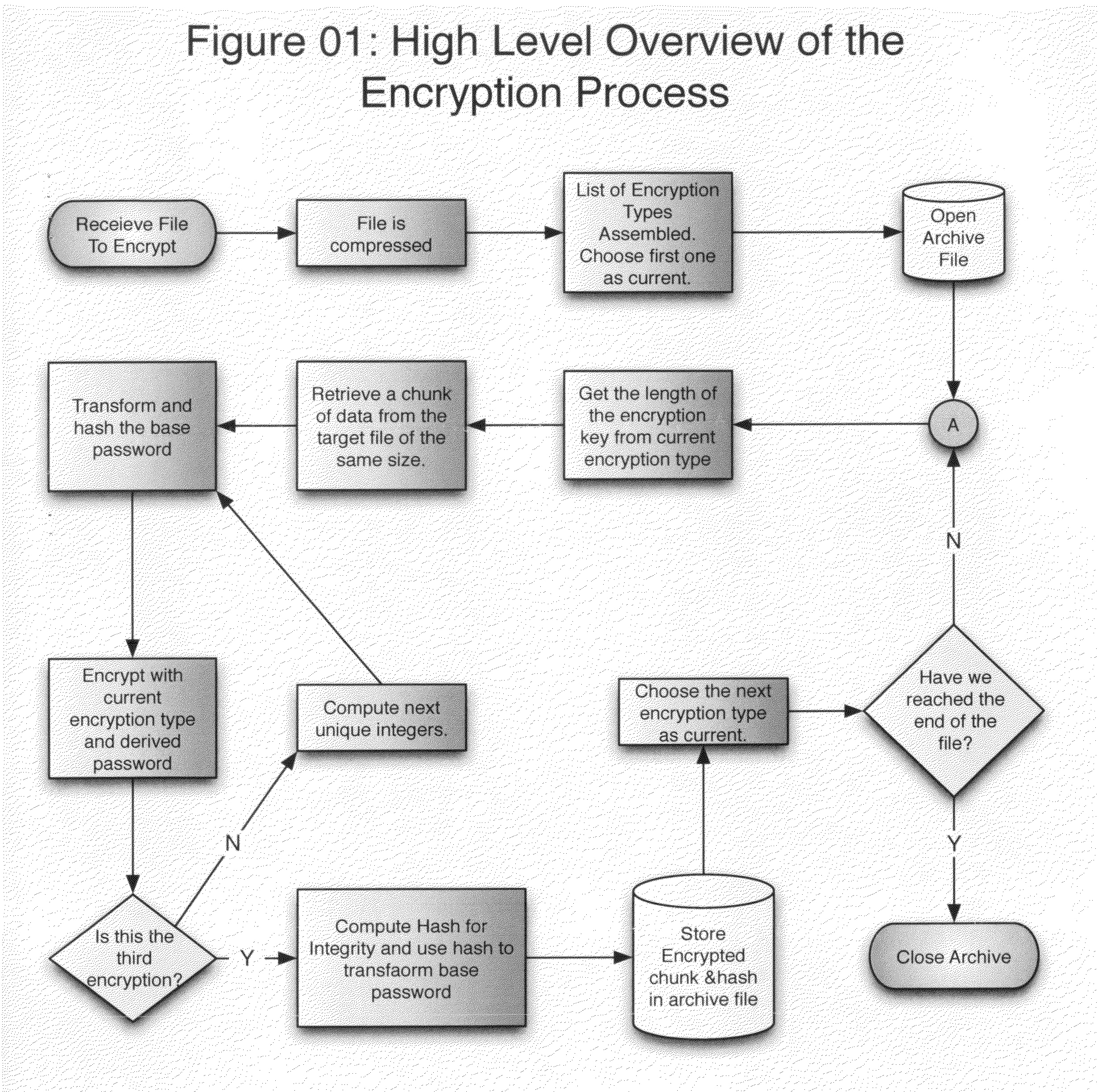Method for providing stronger encryption using conventional ciphers
- Summary
- Abstract
- Description
- Claims
- Application Information
AI Technical Summary
Benefits of technology
Problems solved by technology
Method used
Image
Examples
Embodiment Construction
[0011]As shown in FIG. 1.0 there are thirteen steps involved in the encryption process as follows:[0012]Step 1: A file to be encrypted with this method is first compressed. Current implementations of the method compress with alternating compression mechanisms—namely GZIP, BZIP2, and LZMA—but the particular compression algorithm is unimportant.[0013]Step 2: A list of encryption ciphers to be used is generated. The source for this list can be user input, or it can simply be all supported ciphers. In current implementations, each cipher has at least a 256b key length.[0014]Step 3: The first cipher in this list is considered the current cipher.[0015]Step 4: An archive file is opened on the disk.[0016]Step 5: The password supplied by the user is given a default transformation by hashing it with two different strong hashing algorithms. This hashed password is considered the base password from which all future transformations will be derived.[0017]Step 6: A counter variable is set to 0.[00...
PUM
 Login to View More
Login to View More Abstract
Description
Claims
Application Information
 Login to View More
Login to View More - R&D
- Intellectual Property
- Life Sciences
- Materials
- Tech Scout
- Unparalleled Data Quality
- Higher Quality Content
- 60% Fewer Hallucinations
Browse by: Latest US Patents, China's latest patents, Technical Efficacy Thesaurus, Application Domain, Technology Topic, Popular Technical Reports.
© 2025 PatSnap. All rights reserved.Legal|Privacy policy|Modern Slavery Act Transparency Statement|Sitemap|About US| Contact US: help@patsnap.com


